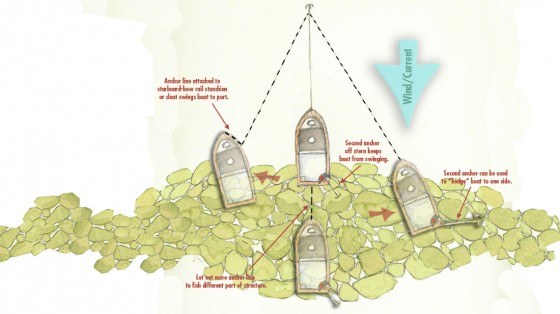Tips for Catching Tautog

For many New Englanders, autumn means colorful leaves, apple cider and pumpkins everywhere. But for fishermen throughout Cape Cod and southern New England, autumn means hunting for tautog and enjoying some of the best bottom fishing of the year.
Tautog, also known as blackfish, is a fun fish to target, as it fights hard and tastes great. Tautog begin migrating into shallow, rocky areas once the water temperature dips into the lower 60s. Along the Cape and southern New England, that inshore push begins around early- to mid-October and can last well into December. Early on, the fish can be found in very shallow water, even less than 10 feet. They move deeper as the season wears on and water temperatures drop.
Anglers can find tautog over any type of inshore structure such as a ledge, rock pile, wreck, reef or breakwater. Buzzards Bay is loaded with the type of structure that tautog love. You might find popular tautog sites are heavily fished and crowded with other fishermen. But hunting down your own tautog hotspots is half the fun of catching these fish.

Look for a small, rocky outcropping in 20 to 30 feet of water. Check out the bottom with your depth finder. Once you locate structure, drop your anchor and try to position the boat right on top of the highest spot. A few feet can make a big difference here, so precise anchoring is critical. Securing the right position can be frustrating, and you’ll likely have to reposition your boat several times before you get it right, but when you catch more and bigger fish, it’ll be worth it.
The fish will let you know pretty quickly whether you’ve anchored in the right spot. You should get a bite within 10 minutes. If not, try re-anchoring or move to a new spot.
For tackle, a 6- to 6 ½-foot rod with a sensitive tip and stiff midsection and butt should do the trick. Many bottom-fishing experts swear by conventional reels, but a midsize spinning reel will also work. Use 30- to 40-pound-test braided line. Being thinner and more sensitive than monofilament of similar strength, it will let you feel your sinker tapping the bottom and the tugs of tautog chomping at your bait.

Tautog will take clams and seaworms, but the preferred bait is green crabs, which are readily available at coastal tackle shops. Cut the crabs in half or in quarters, depending on their size, and thread your hook through two of the leg sockets.
Lower the crab into the water and free-spool line until the sinker taps bottom. It’s important to make sure the sinker stays right on the bottom. Every few seconds, gently raise and lower the rod tip to stay at the bottom and keep your bait out of weeds. You’ll likely lose a few rigs along the way, but that comes with the territory.
Tautog is a delicious fish, whether it is baked or served in a chowder. For some tautog recipes you might enjoy, CLICK HERE.
